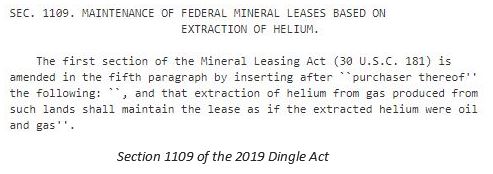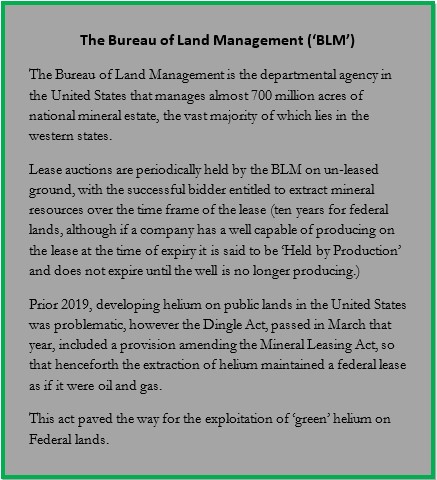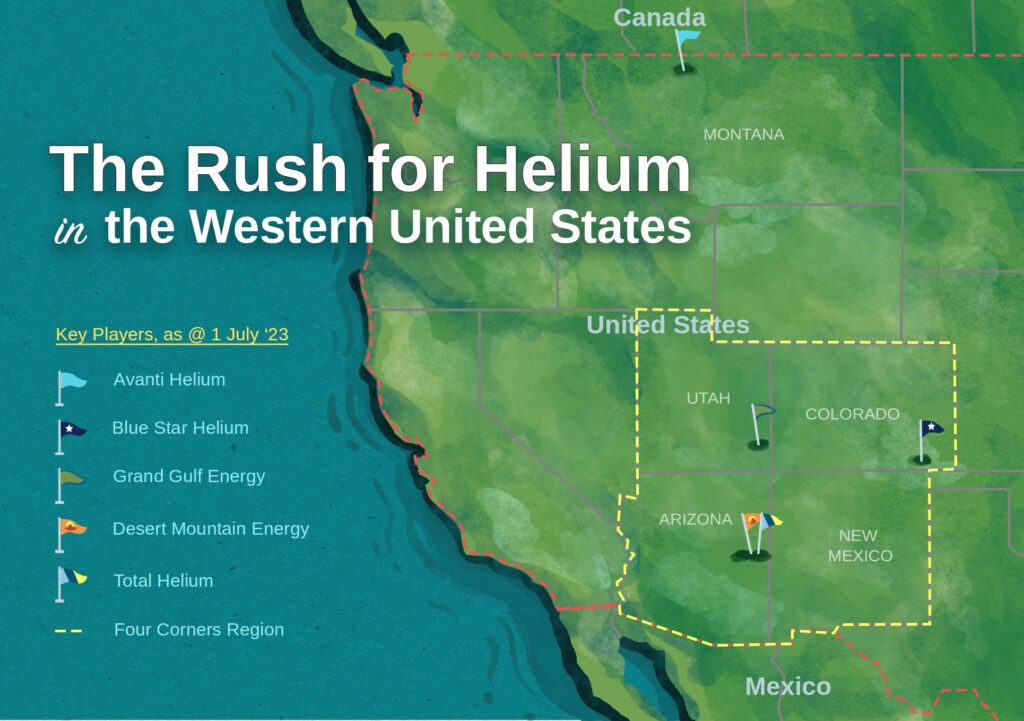What does it take for a marginal commodity on the fringes of speculation to transcend into a credible and fungible entity?
Hype alone won’t suffice: this much can be deduced from lithium’s slow going rise-to-respectability over the 2010s.
Even before this century had hit its teen years, lithium had garnered considerable acclaim as an emerging commodity play, enticing a number of ambitious mineral exploration companies to throw down all their chips on this presumed future commodity quasar. (1)
The case for lithium was strong, but even so, these stocks drifted listlessly for years, and some gave up the ghost before the anticipated boom came to pass. (2)
The emergence of a clear upward trend in the lithium price might have been expected to be the most obvious catalyst for a sentiment shift, but such a shift only became apparent in 2016, by which time such stocks were already attracting mainstream appeal.(3)
The ‘X-factor’ that seems to have finally served to shift the sentiment dial for the lithium hopefuls, would seem to lie in a story, the story of the rise of Tesla. In early 2013, the share price of the trailblazing EV company commenced a twelve-month bull-run that only ran out of puff after the share price had risen six-fold.
This meteoric rise in the Tesla share price captivated popular imagination, and lithium – a key component in electric vehicle batteries- was central to the story. Tesla’s rise garbed the lithium explorers with a veil of respectability, and at long last they began to be perceived as more grounded investments.
While Tesla was the stock-story of 2013, the spotlight stock of 2023 would seem to be another silicon-valley standout, Nvidia (NASDAQ: NVDA), helped in no small measure by the sudden emergence of the AI stage-stealer, ChatGPT. Nvidia’s astonishing one day rise on May 25 that year would push the stock into trillion-dollar territory, and the stock was subsequently lauded as one of the ‘Magnificent Seven’, the new tech-stock gang that seems to have sent the formely dominant FAANG gang on a one way trip to boot hill.
Just as Tesla’s rise in popularity dragged the lithium miners out of the dust, Nvidia’s ascent could have accreditive implication for stocks linked to another emerging commodity, helium, a scarce gas that is critical to the semiconductors that are Nvidia’s bread and butter.
While the Tesla trickle-down effect shored-up the lithium stocks, if we follow the ‘AI’ bread-crumb trail, it takes us first to the semiconductor fabricators, and if we persist in our wanderings, the road eventually leads to a motley collection of tiny helium explorers.
Helium, thus, like lithium before it, may be nearing a critical juncture, a point at which it will emerge from the shadowy midnight zone, rising to bask in the light. But if helium’s hour draws near, that leads to the question of ‘Where?’. Where in the world offers the helium-hunters the most favourable returns, relative to the risks involved?
Helium is rarely found in high concentrations. Economic deposits of primary helium are limited to a small number of regions, with particularly notable concentrations of the gas occurring in North America and East Africa.
But it is the United States, and more specifically, the western states of that union, that offer the surest prospects.
In the article that follows, we will examine the factors that mark out the western United States the choice destination for helium exploration, and as we drill deeper into the topic, we will highlight a number of the small, listed players that have staked a claim in this critical market.
Prior to concluding this review, we will delve into a compelling a case study that effectively showcases the promising potential that is presented by this emerging sector, as well as offering up a cautionary tale in closing.
The scramble for sustainable helium
Although we commenced this article by comparing helium to lithium, the helium-lithium analogue probably somewhat understates the importance of helium to modern industry.
Helium permeates everyday life in the 21st century. Fibre optics, the backbone of the internet, are manufactured using helium, for example.
Helium -combined with hydrogen and oxygen- is used to consolidate a silica glass rod, which is then melted and drawn into fibre optics at a rapid speed, and helium is also employed to provide effective cooling.
As well as its well-known usage in making balloons buoyant, the gas is also employed in MRI scanners, science laboratories, in the space industry, as well as, significantly, in the manufacture of semiconductors.(4)
Helium is a very rare gas on earth, and unlike many other gases, it cannot be synthesised by industrial processes. Helium, essentially, had to be extracted from the bowels of the earth.
Only a handful of locations provide most of the supply. In the 20th century, the United States was the dominant supplier, with a Federal Helium Reserve being established to pool helium production, until a decision was made in 1996 to steadily phase the reserve out.
Apart from being a rare gas, when it does occur, it seldom does so in high concentrations. Almost all of the helium that was accumulated in the US Strategic Reserve, for example, was pooled from helium produced as a minor by-product of the helium-rich Hugoton natural gas field, which spans the states of Kansas, Texas and Oklahoma.
The same is true for the major helium producing gas-fields in the world today, where even gas reservoirs containing just 0.5% helium are considered to be ‘rich’. The helium grades produced from the Ras Laffan field in Qatar, the largest helium supply source outside the United States, are simply infinitesimal.(5)(6)
Helium’s traditional association with fossil fuel production is likely to present a significant headwind for helium production in the years ahead, as oil and gas projects face a stricter regulatory landscape than in years past.
Additionally, many end-users of helium are likely to exhibit a growing inclination towards scrutinising the emissions profile of the helium they procure in the coming years. Chip maker Intel (NASDAQ: INTC), for example, plans to reduce its carbon emissions by 10% between 2020 and 2030. (7)
Fortunately, there are a few exceptional deposits of ‘green’ helium in some parts of the world, where the gas occurs unaccompanied by problematic fossil fuels.
The most notable of these is in the Rift Valley of Tanzania, where last decade, helium was identified occurring in previously unheard of concentrations in no small part thanks to the pioneering efforts of the small exploration venture, Helium One (OTC: HLOGF)(8).
But while Tanzania is increasingly considered to be the ‘El Dorado’ of helium, it cannot be designated as the soundest destination for helium exploration.
Even today, the world’s traditional helium-hub, the United States, remains the surest bet for hopeful helium explorers. In contrast to Tanzania, which must be considered somewhat speculative, the US has a proven track record when it comes to helium.
Two factors place the United States head and shoulders pretty much above anywhere else on earth.
The first of these factors has to do with that ever-important consideration in mineral exploration: ‘location’.
The west coast of the United States is famously known for Silicon Valley, where some of the largest tech companies on earth are based, and the tech industry has a voracious appetite for helium. Semiconductors, the building-blocks upon which the tech industry is built, are ubiquitous in the world of today, found both in the smart-phones that adorn almost everyone’s pockets as well as, in ever-increasing numbers, in motor vehicles.
Helium is the lifeblood of this industry. Leading-edge semiconductor manufacturing pushes material properties to their limits, and helium, because of its exceptional properties, is ideal to extend and enhance key processes in the electronics industry. (9)
Having a helium supply close at hand is particularly imperative for industrial consumers of the gas, as helium is a notoriously difficult gas to contain and to transport.(10)
Helium projects on the westside of the USA can thus operate confident that there will be plenty of home-grown demand for the commodity that they seek.
The second factor that favours helium exploration in this geography relates to a peculiarity of the local real estate. The system of property rights in the United States offers very low barrier of entry to operators.
This backdrop has allowed numerous exploration minnows operating in the United States to grow into mighty megalodons during past commodity booms, and one such incidence will be highlighted later in this piece.
The Four Corners: A strategic helium play
The Superstition Mountains that lie east of the city of Phoenix, Arizona, have been a magnet for hopeful gold prospectors since the days of the Wild West, a quest which would prove elusive for most, and fatal for an unlucky few.
But Arizona’s true treasure-pot may lie just north of these weathered crags, in the Holbrook basin and stretching beyond into the territory of three bordering states. Here, a new gold-rush seems to be underway. But while the last rush had a distinctly antediluvian character, the latest rush is high-tech through-and-through.
Behind Nvidia’s eye-popping surge on the 25th of May was a perception that Nvidia was akin to ‘the picks and shovels’ dealer in the new AI Gold rush, as one analyst dubbed it.(11)
This perception, however, does not quite marry with reality. Nvidia design chips, but they are entirely dependent on other companies when it comes to sourcing supply. The real ‘picks and shovels’ in the age of artificial intelligence are the chip-makers.
The exponential growth in artificial intelligence since the 2010s has sparked a remarkable surge in demand for semiconductors. Cutting-edge AI models, such as ChatGPT, rely on massive amounts of specialised chips for their training, driving a substantive increase in demand for these components. As the AI arms-race intensifies among competing tech-giants, the need for semiconductors is expected to rise significantly.
These semiconductors are the very bones of Nvidia’s business, and their core products, GPUs and SoC units, are built out of them. Nvidia’s flagship chips are supplied by their foundry, Taiwan Semiconductor Manufacturing Co. (TSMC) (NYSE: TSM), the largest chip manufacturer in the world.
In recent years, geopolitical concerns have prompted Taiwan Semiconductor to invest $40 billion to build two semiconductor factories in Phoenix, Arizona.(12) The move to invest in Arizona by TSMC was brokered by the US government in 2020 as part of an onshoring push by the Biden Administration.
If TSMC’s move to set down roots on US soil represented the first stage of the onshoring strategy, the enactment of the Chips and Science Act in 2022 is expected to further consolidate the US semiconductor industry for years to come.
The Act included manufacturing subsidies totalling $39 billion, aimed at inducing further local growth in this critical industry, (13) and at time of writing, the signs are that this stimulus is having the desired effect. Even Nvidia has expressed interest in branching out into chip manufacturing, in partnership with the semiconductor giant, Intel. (14)Like TSMC, Intel have committed billions of dollars to construct new fabs in Arizona.
The increasing significance of the semiconductor industry in Arizona in the early 2020s has garnered significant media attention. Less widely reported is that the expanding presence of these chip giants in the region coincides with a surge of activity in the helium space in this corner of America.
In September of 2021, for example, an Australian explorer, Grand Gulf Energy acquired the projects of Kessel Resources, in the south of Utah (15). A month later, Tacitus LLC, a US-based helium development company controlling substantial acreage near the Arizona-New Mexico border, was taken over by the Navajo Transitional Energy Company (16). In early, 2023, the Canadian company, Total Helium announced that they had acquired an interest in a project in the Holbrook Basin in Arizona, and that same year, a new player, Pulsar Helium, emerged to join the hunt for helium in the American interior
A scramble for helium would seem to be underway, with much of the focus being on the critical region known as the ‘Four Corners’ on account of the intersection of four state borders.
Arizona has been labelled as ‘the Saudi Arabia of helium’(17) -an appellation which, for reasons noted above, is probably more accurately applied to Tanzania- but the state certainly falls firmly in the helium heartland of the United States, and it is hard not to suspect that its helium riches may have been a factor in the decision of Taiwan Semiconductors to build factories in the state.
The growth of the helium-hungry semiconductor industry in Arizona imparts a strategic cache on helium projects located in the south-western United States, solidifying the regions’ status as the global helium play par excellence.
It is intriguing to note that one of the founders of the Tanzanian helium pioneer, Helium One, currently heads the helium venture, Pulsar Helium, which, as mentioned previously, has set its sights on the United States. This underscores the attraction of the United States to helium exploration ventures, and the appeal has much to do with the fact that the United States has repute in being a favourable jurisdiction for such activities. Let us delve into this aspect now.
Helium lease acreage in the United States

The United States is one of the most developed countries in the world, with mature infrastructure , large pipeline networks and established transport networks that facilitate efficient logistics. These factors help make the United States a choice destination for oil and gas exploration, but what truly adds icing on the cake is the peculiar system of property rights in the United States. This aspect is an important consideration when assessing the projects of helium companies, and thus necessitates some further elaboration.

The US is one of the only countries in the world to allow private individuals to own the minerals under their land. In contrast to Australia or Canada, in the US, landholders own the mineral rights below their property, and can negotiate directly with companies that express an interest in drilling for oil and gas on their property. Such agreements are known as ‘Fee Leases’, and they have fewer restrictions than comparable Federal and State arrangements.
The Dingle Act, passed in 2019, introduced changes to the US Mineral Leasing Act, which effectively unchained helium from oil and gas production on public land, paving the way for helium exploration in the extensive Federal leases in the western United States. (18)
It is notable that many of the emerging helium plays are located in the western United States, where such leases are common. There are some advantages associated with Federal and State leases, as they tend to be simpler -negotiations over fee leases can involve dealing with multiple parties- and longer term, and not requiring a work program. (see inset, above).
In July 2023, the Biden administration proposed changes to leasing regulations for oil and gas development on public lands, aimed at raising royalty and rental rates, and increasing the minimum bond requirement. At time of writing, it is too early to assess the broader implications of these ammendments, although in theory, the changes might make fee leases more attractive down the track.(19)
Where fee leases hold sway, companies negotiate directly with the individual landholders. In fee-lease arrangements, companies are generally faced with less environmental restrictions than under state or federal leases.
The opening up of public lands to helium exploration, as well as the range of different lease arrangements in the jurisdiction, mark out the United States as a highly attractive destination for helium exploration companies.
As we will see below, in practice, the acreage of helium exploration companies in the United States tends to fall under a mix of these different lease types.
Stock Spotlight: Five Helium Hopefuls

Having tackled the particulars of the US leasing framework, and also having considered the macro picture, we will now turn our focus to the micro, taking a closer look at some of the players operating in this niche in the USA. The focus of our attention here is five listed helium acreage plays operating in, or not far from, the highly prospective ‘Four Corners’ region of the United States.
The stocks in the spotlight are three Canadian domiciled companies, Avanti Helium, Desert Mountain Energy and Total Helium, and two Australian operators, Blue Star Helium and Grand Gulf Energy. With the exception of Total Helium, these stocks are ‘green’ helium ventures, looking to produce high-grade helium with a low green-house gas emissions profile.
The table below shows the size of the lease position of each US-focused helium stock, as well the US dollar-per-acre value of the lease holdings for each of the stocks.
Each dollar per-acre figure has been determined by calculating the enterprise value of the company divided by the total number of acres held by the company, using the figures from the most recent financial reports.

The acreage figures have been compiled from information provided in market releases as well as through communication with the companies.
This table above, it should be noted, is not comprehensive.
One US helium stock, Petrosun (OTC:PSUD), has been excluded, on account of the vagueness of the publicly available acreage data for this company.
An attempt was made by the author to contact this company for clarification, however the email was returned as undeliverable. The lack of transparent data on this stock means that it is simply impossible to meaningfully compare the assets of Petrosun to these other operations.
Also excluded here is the Canadian helium explorer, Global Helium (CSE: HECO, OTC: HECOF). Although this company does have a small position in the US state of Montana, its overwhelming focus is on its local Saskatchewan operations.
Each of the five helium stocks covered here possess their own distinct character, and as such they cannot be directly compared to one another on a like-for-like basis. We will provide a brief overview of the attributes of each stock, in an effort unpick some of their peculiarities.
Avanti Helium’s signature quirk is that it controls helium acreage straddling the border of the US and Canada, the lion’s share falling in the north of the US state of Montana, where they have acquired around 60,000 acres from private owners. Avanti’s most significant block of fee lease acreage is a 50,000 acre tract, Sweetgrass, from which the company is currently building a unit to recover helium, which is expected to be fully operational by the end of 2023. Avanti also controls extensive acreage in the Canadian province of Saskatchewan.(20)
Since 2019, Blue Star Helium has established a significant position in Las Animas country, Colorado, situated near the Model Dome field. The area boasts a strong track record, as this field, initially exploited during the interwar years, was one of the first sources of high-grade helium to be mined in the United States.(21)
Blue Star’s position in the county is composed of 96,000 acres of fee leases, 42,000 state of leases and 86,000 federal leases. Like Avanti, Blue Star expects to transit into production in late 2023, and in June that year, the company announced it had signed a gas processing agreement with IACX Energy, clearing the way forward to that end.
Desert Mountain Energy controls a 108,000 acre position in Arizona’s Holbrook basin, with roughly 70,000 of this being leases with the state, and the remainder fee leases. Until the end of 2022, the company also controlled helium-rich oil and gas wells in Oklahoma, however, the company divested of these assets to focus on the project in Arizona.
In the second quarter of 2023, the company completed a production plant, paving the way for the company to become a primary producer of helium. In June, the company announced the acquisition of a helium-bearing field in New Mexico, and the following month, in an unexpected twist in the tale, the company suddenly announced they would be decamping across the border, with their modular production plant in tow, to the newly acquired project in New Mexico. The company has stated that they will maintain their Arizona leases, and currently intend to resume operations in that state down the track.
The focus of our fourth player, Grand Gulf Energy is the Red Helium projected, located directly north of the Holbrook basin, just across the Utah state border, where they have leased 29,000 acres, comprised of fee leases and Utah state leases.
Finally, the fifth and final player, Total Helium recently acquired an asset known as the Pinta South project in the Holbrook basin, but unlike their near neighbour, Desert Mountain, they still retain a large position in the Hugoton field in Kansas, the traditional helium production zone of the USA. The Pinta South project is 27,000 acres in total, composed of state and fee leases, while in Kansas they control 46,000 acres. Total Helium is constructing, at time of writing, a large underground helium storage facility, offering another point of difference between this company and the other four plays.
It is worth pointing to a couple of themes that stand out in the above review.
The first of these is that the ‘centre of gravity’ for helium is shifting from the legacy helium states of Oklahoma and Kansas, and into the west. Desert Mountain disposed of their Oklahoma acreage, located at the southern end of the Hugoton field, at the end of 2022, so as to concentrate on their plays in Arizona and New Mexico, and, as noted previously, Total Helium also has moved into this neck of the woods in early 2023 with their purchase of the Pinta South project in Arizona.
A second recurring theme is that these three of the non-producing companies going into 2023- Avanti, Blue Star and Desert Mountain- all commenced the year confident that they would soon be levelling up into helium production.
That three of our non-producer hopefuls began the year with optimism, expecting to level up from explorers into helium producers in the very near future, is enough to arch an eyebrow. Presently, all five of these helium juniors look as if they will be set to have transitioned into producer status by the end of 2023, which lends to suspicions that something is going on in the West.
As suggested above, that ‘something’ probably partly relates to the set-down of Taiwan Semiconductors on US soil, in line with a broader onshoring push which is driving feverish activity in the semiconductor space in Arizona.
The galloping helium consumption stoked by these home-grown chip foundries seems to be imparting a strategic cachet on any helium assets that fall within their shadows.
Case Study: Aurora Oil and Gas
The feverish activity in the Four Corners zone is reminiscent of a similar scramble that unfolded at the commencement of the fracking boom in the United States earlier this century.
During the heady years of the oil boom in the United States of the early 2010s, many exploration companies who were fortunate enough to be sitting on a lucrative oil patch in the United States experienced pronounced surges in their share prices. Of the US oil plays of the day, the most desirable oil and gas real estate was found in the Eagle Ford.
Aurora Oil and Gas was one of the success stories of the Eagle Ford play. The Australian oil and gas explorer made its stock exchange debut in 2005, initially being valued at $28 million, but ending its days as a listed entity after it was taken over for more than $2 billion in 2014.
The Eagle Ford boom was set off by oil-giant Petrohawk in late 2008, when the company successfully tapped gas from the formation, and over subsequent months, excitement over the economic potential of the Eagle Ford grew as other oil and gas companies drilled wells around Petrohawk’s position. The number of well permits targeting the region soared in subsequent years, with the chief attraction of the region being that it offered oil producers high rates of return for low cost. (22)
The key factor behind Aurora’s success was their early mover advantage. The company picked up a patch of just over 20,000 net acres in the Eagle Ford share region of Texas, just as the region was on the cusp of the boom. (23)
This example is worth highlighting, as the ‘helium five’ spotlighted above seem to be similarly positioned as Aurora was in the days of the US fracking boom.
Similar to Aurora’s claim at Eagle Ford, all of these early-birds have carved out strategic positions in highly promising regions. However, there are also notable differences between Aurora and our five players.
For one, the acreage position of all five is larger than that which was held by Aurora during the Eagle Ford boom. Even the relatively small ‘Four Corners’ acreage positions of Grand Gulf Energy and Total Helium (29,000 and 27,000 respective acres) exceed Aurora’s acreage holding during the heydays of Eagle Ford.
More significantly, the gas that is being sought by these helium hopefuls is worth as much as fifty times as much as that which was being sought by Aurora. (24)
It remains to be seen whether the words ‘Four Corners’ will prove to be as evocative as the word pair ‘Eagle Ford’ during the giddy days of the last great drilling boom. However, in the canyons and valleys of the present-day western USA, there would appear to be some distinct echoes of the early stages of that last great boom.
A New Rush Begins…?
At the outset of this piece, a comparison was made between the helium market today and that of lithium at the commencement of the 2010s. But in many respects, this comparison probably sells short helium.
While there are a number of notable differences between the two commodities, perhaps the most striking difference between helium and lithium on the eve of the boom-years lies in the starkly different supply dynamics of the two commodities.
Lithium assets may have been once cheap on account of a speculative stigma and the immaturity of its market, but the market was at least viable. But for many years, this was not the case with helium, the price being artificially suppressed for a quarter of a century as a result of the decision by the US congress to sell down the US helium reserve in 1996. As Government sales flooded the market for years, most private actors in the industry were forced out.
The global transition away from fossil fuels presents a further significant headwind for helium production, as historically, production of the noble gas has been tied to natural gas, with the gas being produced as a bit constituent of hydrocarbons.
The shift away from fossil fuels necessitates the creation of a source of primary helium gas, with grades high enough to justify commercial extraction. The ‘Ground Zero’ for this endeavour seems to be the Four Corners zone in the Western United States, where high-grade helium abounds.
A recalibration is thus underway in the helium market, unfolding on two fronts. The helium glut of just a few years ago has undertaken a pivot, with the helium price responding accordingly. Concurrently, with the world losing its appetite for the harmful emissions associated with the extraction of fossil fuels, a scramble for new ‘green’ helium sources, unencumbered by problematic methane or carbon dioxide, is underway.
The final ingredient in this potpourri is the exploding demand for helium from the burgeoning US tech sector, especially from new semi-conductor fabs. Helium is as vital to the fabrication of the semiconductors that power Nvidia’s tech as lithium is to the operation of electric vehicles.
With the US government holding its final helium auction in 2023, the road is clear for the emergence of a green-helium industry. (25)
As has been highlighted here, the western United States is currently the hottest address in the world for helium. This region represents the meeting of the waters, possessing both high-grade ‘green’ helium and potent sources of industrial demand, both from the growing semiconductor industry in Arizona as well as from the tech-hub of Silicon Valley.
We’ve highlighted five early-birds who have established a foothold in or near to this critical region. As early movers, these companies have loaded the dice in their favour.
The purpose of this piece is not to pick winners, and indeed, each of the named companies have their idiosyncrasies, with attendant pros-and-cons to be assessed. Perhaps most notably, the helium grades across these diverse projects differ markedly.
The road ahead for these ventures is unlikely to be devoid of obstacles. A recent experience of one of our hopefuls serves as a case in point, offering a timely reminder that this emerging sector is not without attendant risks.
A-tumblin’ down the hill of hope: Desert Mountain’s fall
On the 6th of July 2023, the share price of Desert Mountain Energy experienced a sudden and substantive decline, plunging to multi-year lows. The closing share price of 0.44c represented a decrease of more than 50% compared to the previous day’s closing price.
The trigger for Desert Mountain’s share-price malaise was an announcement released by the company, which disclosed that that they had opted to shift their modular helium processing facility from Arizona to their recently acquired project just across the border in New Mexico.
The company cited frustrations with the Arizona regulatory authorities as being the impetus for this move. It is probably significant that New Mexico has a reputation for being ‘drill-friendly’.(26) The company has resolved to hold on to their position in Arizona, the intention being to return to the state at some later time.
Arguably, Desert Mountain was probably the ‘leading light’ in the United States helium space, and its sudden fall from favour illustrates the dangers associated with chasing the big horse.
But this example also illustrates the primacy of location for exploration ventures, and more specifically, emphasising the importance of evaluating the lease acreage profiles of helium exploration projects in the United States. It may be telling that of the five helium hopefuls covered in this piece, Desert Mountain Energy’s position going into 2023 was one of the least diversified, initially concentrated in just one state and predominantly composed of State leases.
Naturally, the hiccup encountered by Desert Mountain in Arizona leaves something of a question mark hanging over other projects in the state, although it is possible that Desert Mountain’s difficulties were specific to their project.
Most of our other helium hopefuls have opted to spread their acreage across different lease type, different states, and, in the case of Avanti, an entirely different national jurisdiction, and this would appear have been a wise course.
Desert Mountain’s share-price woes serve as a reminder that, just as during the Arizona Gold Rush in the days of the Old West, in the new scramble for helium, there is always the risk that that a glittering prize, hastily presumed to gold by the hopeful prospector, may turn out to be fools-gold.
Special thanks to Total Helium, Desert Mountain Energy and Pulsar Helium for their assistance with this article. Any mistakes are the authour’s own.
Featured graphical art by S. Silva
Disclosure: The authour owns shares in Blue Star Helium
Footnotes
(1)Chanticleer (Pseudonym), Allkem’s trip from HotCopper tiddler to $16B lithium major,
Australian Financial Review, May 16, 2023 (view link)
(2) Lithex Resources Ltd, Lithex signs agreement to transform into high potential internet marketing business, ASX, July 10, 2014 (view link)
(3) Bhutada, G, Lithium Prices Surge on EV Demand from China, Visual Capitalist, January 26, 2022 (view link)
(4) Stockman, P, Helium in Electronics, Gasworld, January 2016, p 38-40 (view link)
(5) Boreham, C.J, Edwards, D.S, Poreda, J.R et al. Helium in the Australian liquified natural gas economy, The APPEA Journal, 2018, 58, 209-237 (view link)
(6) Ras Laffan Helium, Qatargas, Accessed July 1, 2023 (https://www.qatargas.com/english/operations/ras-laffan-helium)
(7) Intel, 20-21 Corporate Responsibility Report, p 7. Archived by the Wayback Machine on June 23, 2021 (view link)
(8) Reisch, M.S, New, Extremely Valuable Deposit Discovered in Africa, Scientific American, June 29, 2016 (view link)
(9) Stockman, P, Helium in Electronics, Gasworld, January 2016, p 38-40 (view link)
(10) Icy Travels, Linde Engineering, Accessed July 1, 2023 (https://www.linde-engineering.com/en/about-linde-engineering/success-stories/icy-travels.html)
(11) Carew, S & Nellis, S, Semiconductor index surges with Nvidia leading race to AI ‘gold rush’, Reuters, May 26, 2023 (view link)
(12) Semiconductor Advantages, Arizona Commerce Authority, Acessed July 1, 2023 (https://www.azcommerce.com/industries/manufacturing/semiconductor-advantages/)
(13) FACT SHEET: CHIPS and Science Act Will Lower Costs, Create Jobs, Strengthen Supply Chains, and Counter China, The White House, August 9, 2022, Accessed July 1, 2023 (https://www.whitehouse.gov/briefing-room/statements-releases/2022/08/09/fact-sheet-chips-and-science-act-will-lower-costs-create-jobs-strengthen-supply-chains-and-counter-china/)
(14) Lee, J, Shephardson, D & Mehta, C, Nvidia CEO says interested in exploring chip manufacturing with Intel, Reuters, March 24, 2022 (view link)
(15) Grand Gulf Energy Ltd, Utah Helium Acquisition, ASX, September 2, 2021 (view link)
(16) Parkinson, N, NTEC acquires helium development company Tacitus LLC, Gasworld, October 18, 2021 (view link)
(17) Weiss, E, Wildcatters are Pitching Arizona to Investors as the Saudi Arabia for ‘Green’ Helium Extraction, Phoenix New Times, July 19, 2021 (view link)
(18) Watson, R, WHAT CONGRESS JUST DID TO HELP FILL THE HELIUM GAP – SOMETHING TO CELEBRATE (EVEN WITHOUT BALLOONS), Welborn Sullivan Meck & Tooley, P.C, May 16, 2019 (view link)
(19) Interior Department Takes Steps to Modernize Oil and Gas Leasing on Public Lands, Ensuring Fair Return to Taxpayers, US Department of the Interior, July 20, 2023, Accessed July 21, 2023 (view link)
(20) Avanti Helium, Corporate Presentation March, 2023 (view link)
(21) Coalson, B.E & Pearson, W.C, Anomalous Helium in Southeastern Colorado, SIPES Newsletter, November 2022, p 19 (view link)
(22) Eagle Ford Boom, Hart Energy, Feburary 1, 2012, Accessed July 1, 2023 (view link)
(23) Aurora Oil & Gas Ltd, Quarterly Report for the period ended 31 December, 2009, ASX, January 29, 2010 (view link)
(24) Orlando, A, The rise of helium: a critical raw material and not just a party balloon filler, Mining.com.au, June 24, 2023 (view link)
(25) GSA Announces Sale of Federal Helium System Assets, US General Services Administration, June 22, 2023, Accessed July 1, 2023 (view link)
(26) Palmer, I, Rich In Oil And Gas But New Mexico Searching For A Safe Transition To Renewables, Forbes, February 4, 2021 (view link)




